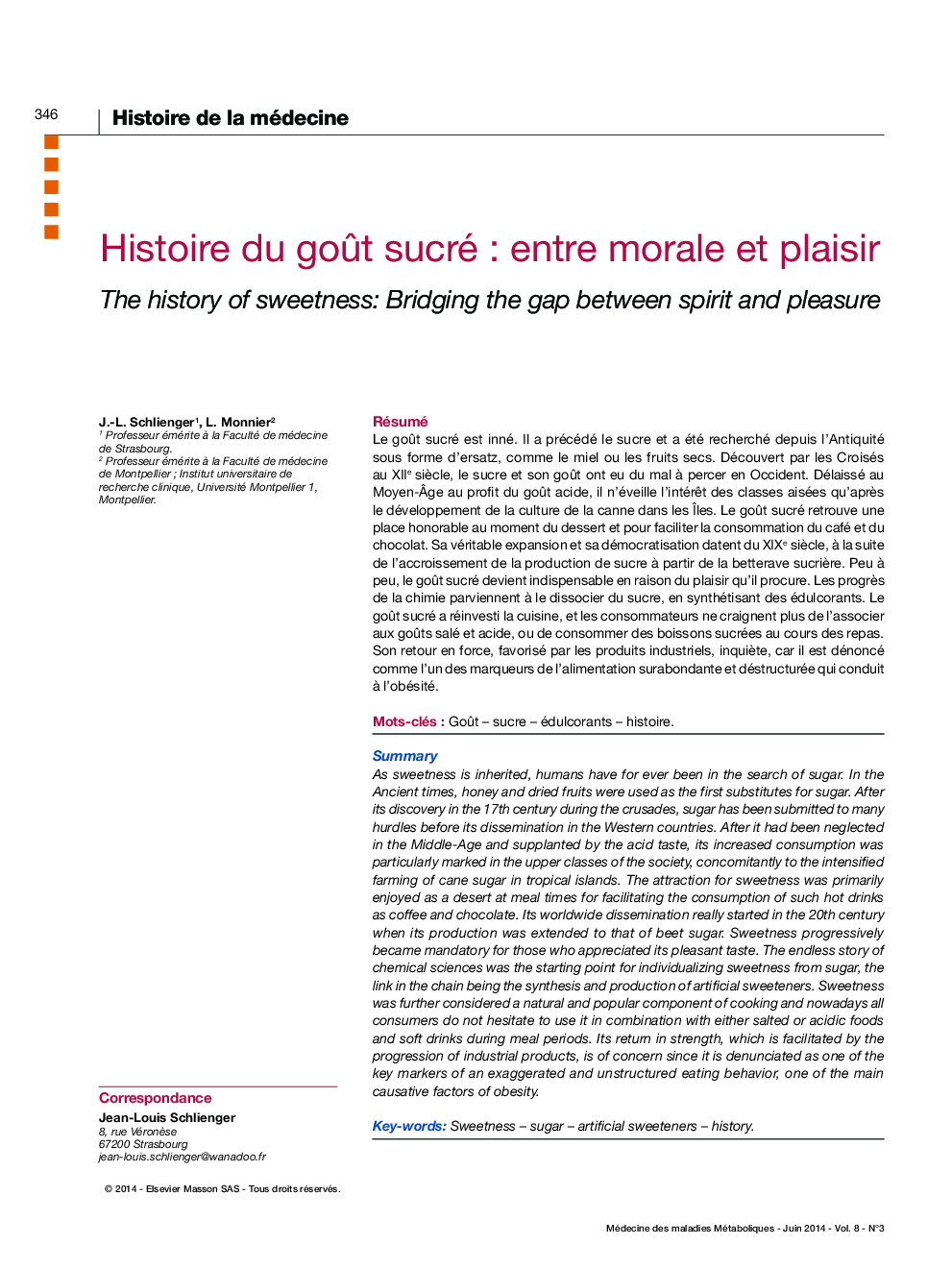| Article ID | Journal | Published Year | Pages | File Type |
|---|---|---|---|---|
| 3274537 | Médecine des Maladies Métaboliques | 2014 | 6 Pages |
Abstract
As sweetness is inherited, humans have for ever been in the search of sugar. In the Ancient times, honey and dried fruits were used as the first substitutes for sugar. After its discovery in the 17th century during the crusades, sugar has been submitted to many hurdles before its dissemination in the Western countries. After it had been neglected in the Middle-Age and supplanted by the acid taste, its increased consumption was particularly marked in the upper classes of the society, concomitantly to the intensified farming of cane sugar in tropical islands. The attraction for sweetness was primarily enjoyed as a desert at meal times for facilitating the consumption of such hot drinks as coffee and chocolate. Its worldwide dissemination really started in the 20th century when its production was extended to that of beet sugar. Sweetness progressively became mandatory for those who appreciated its pleasant taste. The endless story of chemical sciences was the starting point for individualizing sweetness from sugar, the link in the chain being the synthesis and production of artificial sweeteners. Sweetness was further considered a natural and popular component of cooking and nowadays all consumers do not hesitate to use it in combination with either salted or acidic foods and soft drinks during meal periods. Its return in strength, which is facilitated by the progression of industrial products, is of concern since it is denunciated as one of the key markers of an exaggerated and unstructured eating behavior, one of the main causative factors of obesity.
Related Topics
Health Sciences
Medicine and Dentistry
Endocrinology, Diabetes and Metabolism
Authors
J.-L. Schlienger, L. Monnier,
